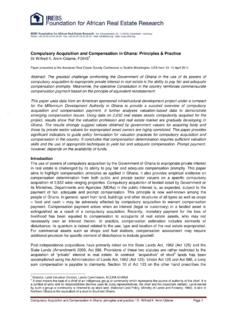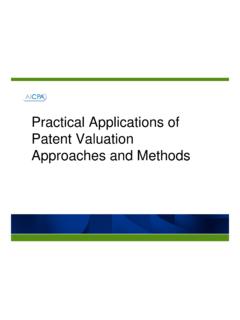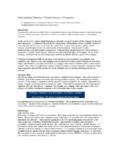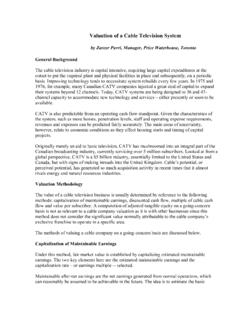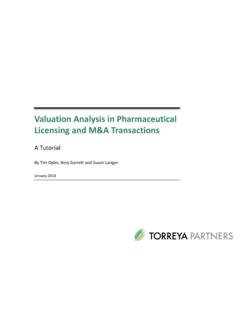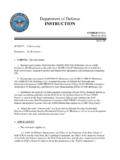Transcription of Medical Practice Acquisition Guide - Doctors Broker
1 Page 1 of 10 Copyright 2013, The Holloman Law Group, PLLC THE HOLLOMAN LAW GROUP, PLLC 1050 Connecticut Avenue NW Tenth Floor Washington, 20036-5334 Tel: Fax: Medical Practice Acquisition Guide A. Preparing for a Sale Start the planning process early. Most advisors estimate that the sale/ Acquisition of a Medical Practice can take two to five years to complete, depending on the size and complexity of the Practice . The two to five year period represents the amount of time needed to organize the office and files, identify the correct buyer, negotiate and close the deal. The physician or group, as the case may be, should also keep in mind that most acquirers, with the exception of hospitals or large institutional employers, will require the physician(s) to stay onboard for at least one year after the sale has closed.
2 In the years leading up to a sale, it is essential that a Medical office avoid lowering productivity, thereby making the Practice less attractive to potential acquirors. In fact, in preparation for a sale many practices employ additional staff, including physician employees, to ensure patient demand is met and there is capacity to meet a projected increase in patient volume. While obvious that a loss in patients tends to reduce the purchase price of a Practice , the loss of key staff may reduce the value that an acquiror is willing to pay for the Practice as well. In addition, a physician or group preparing a Practice for sale should also have a good working knowledge of all overhead expenses essential to calculating the value of the Practice .
3 Overhead expenses range from Medical and office supplies to payroll expenses to rent or property tax if the Practice owns the building in which it is located. Any personal expenses that may have been counted as business expenses either for taxes or other reasons should be excluded from overhead expenses to increase net profit when positioning the Practice to be acquired. A trend of increasing profits, no matter how modest, makes a business more appealing to potential buyers. B. Preliminary Agreements To begin the Acquisition process, both parties to the sale often sign a confidentiality agreement, which requires that the information obtained as a result of due diligence investigation be kept confidential.
4 Generally the agreement will include a deadline by which all due diligence must be Page 2 of 10 Copyright 2013, The Holloman Law Group, PLLC completed, as well as details regarding the scope of the due diligence. The parties, if prudent, would include an exclusivity provision requiring that neither party negotiate the sale or purchase of the Medical Practice with a third party for a specified period. After the basic terms of the transaction have been determined, the parties may execute a Letter of Intent establishing a basic outline of the proposed Acquisition . C. Form of Purchase. Traditionally, a Practice Acquisition may take the form of either a stock purchase or an asset purchase.
5 With a stock purchase, the purchaser acquires assets (equipment, furnishings, and accounts receivable) as well as liabilities (payables, obligations to employees, malpractice actions). Acquisition of corporate stock is most prevalent when: (i) the current physician employee(s) of the Practice is/are becoming a full or partial owner of the Practice ; or (ii) when a hospital is purchasing the Practice and the physician shareholder(s) or employee(s) is/are becoming employees of the Practice . Asset acquisitions are more common when a seller wishes to close a Practice and retain accounts receivable, and a purchaser does not wish to be responsible for liabilities.
6 D. Purchase Price. The purchase price is calculated as the sum of acquired assets ( tangible assets, intangible assets, and accounts receivable) and must be determined in accordance with fair market value ( FMV ) in order to comply with regulatory requirements. FMV is the price resulting from bona fide bargaining between well-informed buyers and sellers, and does not take into account the volume or value of referrals by the referring physician or other business generated between the parties. The two types of assets of a Practice requiring valuation are tangible (including furniture, equipment, and improvements) and intangible (goodwill).
7 Tangible assets may be valued at book value or appraised separately if the parties believe there is substantial value to the tangible assets that warrants a third party appraisal or if there is disagreement about the valuation. Appraisal will also insure that the purchase price does not include payment for referrals. Commonly, a seller will propose that tangible assets are less valuable than intangible assets, because real estate frequently is not involved, and usually most of the office equipment and furniture have depreciated considerably. While the methods of valuing tangible assets vary and depend upon many factors, valuation methods frequently utilized include "capitalization of earnings method," "capitalization of excess earnings," "discretionary cash method," "the discounted future earnings method," and the "formula or rule of thumb method.
8 " The formula or rule of thumb method has been referred to as the "laymen's" approach to valuating a business concern. This method is usually a function of market value, and will often reflect the value of a business on the open market. A frequently used formula entails totaling the gross revenues for the past five years then dividing by a factor of five to obtain the average gross revenue. Page 3 of 10 Copyright 2013, The Holloman Law Group, PLLC Intangible assets, such as goodwill, are generally based on the Practice s size, location, reputation, patient market, and profitability. Other Medical Practice intangible assets may include telephone listings, contracts with managed care organizations, experienced office staff, assignable lease agreements under which the rental price is below current market value, assignable vendor agreements and non-competition agreements.
9 When attempting to value Practice goodwill, one must take into account various elements such as operating procedures and policies, the quality of support staff, salaries of personnel, overhead, an established client base, patient records, computer systems and Medical library resources, Practice history, history of malpractice suits, degree of dependence on referrals and basis for referrals, third-party payor participation and mix, other issues with payors such as audits or malpractice, and revenue history. The Practice location and demographics are also viewed as important factors in calculating Practice goodwill as often the harder it is to start a Practice from scratch in a particular location, the higher the value of the Practice to be sold.
10 At any rate, the valuation should be determined using a recognized valuation methodology, consistent with generally accepted accounting principles, and supported by written documentation. E. Purchase Agreement. There are two ways a physician can sell a Practice : a hospital (or other organization) can purchase stock in the entity that owns the Practice , or it can purchase the assets of the Practice . There are advantages and disadvantages to each type of sale, and it is important that a health care attorney and an accountant correctly structure the deal and its terms. Whether a stock sale or an asset sale, the controlling document is the Purchase Agreement which details the terms of the Acquisition , including the assets purchased, liabilities assumed, as well as post sale covenants.
